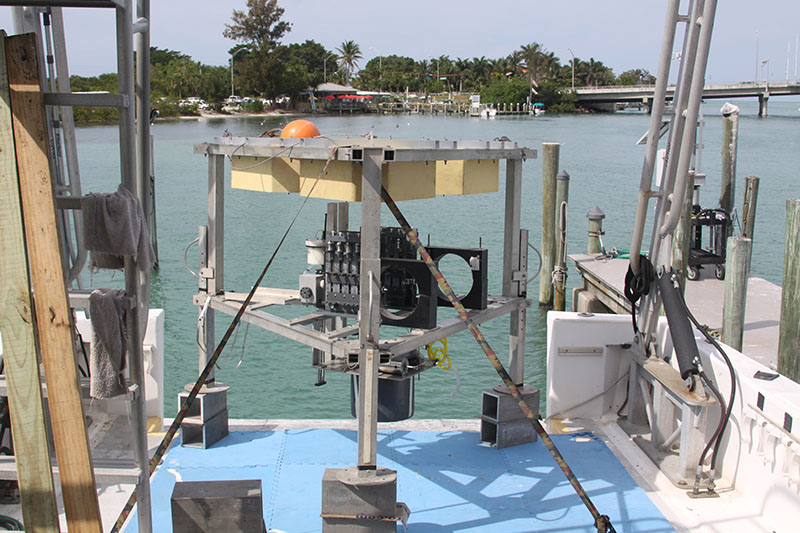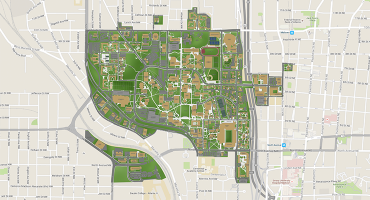Blue holes are underwater sinkholes, similar to sink holes on land. Underwater sink holes, springs, and caverns are karst (calcium carbonate rock) features that are scattered across Florida’s Gulf continental shelf. They vary in size, shape and depth, but most are ecological hot spots with a high diversity of abundance of plants and animals.
In May and September 2019, a team of scientists from Mote Marine Laboratory, Florida Atlantic University/Harbor Branch, Georgia Institute of Technology and the U.S. Geological Society, with support from the NOAA Office of Ocean Exploration and Research, explored one blue hole, dubbed “Amberjack Hole,” approximately 30 miles offshore west of Sarasota. In August 2020 and May 2021, a second deeper location, Green Banana, will be explored.
The 2019 work was the team’s most detailed blue hole investigation to date, as they deployed divers and a “benthic lander”—a framework holding multiple scientific instruments collectively weighing more than 270 kilograms (600 pounds)—into Amberjack Hole, whose bottom extends deeper than 107 meters (350 feet). The team documented life around the rim of the hole and carbon, nutrients, and microscopic life throughout the hole and in its bottom sediments.
Watch now: "Changing Seas" Episode 1201: "Florida's Blue Holes: Oases in the Sea"
Why Study Blue Holes?
A blue hole can be an oasis in an otherwise barren seafloor. Blue holes are diverse biological communities full of marine life, including corals, sponges, mollusks, sea turtles, sharks, and more. The seawater chemistry in the holes is unique and appears to interact with groundwater and possibly aquifer layers. This link contributes to the knowledge of carbon cycling between surface and groundwater.
Little is known about blue holes due to their lack of accessibility and unknown distribution and abundance. The opening of a blue hole can be several hundred feet underwater, and for many holes, the opening is too small for an automated submersible. In fact, the first reports of blue holes did not come from scientists or researchers, but actually came from fishermen and recreational divers. Now, the two groups are working together to conduct scientific surveys and exploration of these mysterious holes.
What Can We Learn?
We don’t know much about blue holes, so many exploratory questions remain. From this “mission,” scientists are hoping to learn:
- Whether these submersed sinkholes are connected to Florida’s groundwater or if there is groundwater intrusion into the Gulf of Mexico
- If a particular blue hole is secreting nutrients and thus affecting an area’s primary production
- Whether microenvironments harbor unique or new species of microbes
- If the Amberjack site should become a protected area
About This “Mission”
The rim of Amberjack Hole is 34 meters (113 feet) from the surface, and the rest of the hole extends down another 72+ meters (237 feet)! In May 2019, scientific divers traveled to the bottom of Amberjack Hole and deployed a special benthic lander created for this project to measure nutrients and carbon-based compounds right where bottom water meets the sediment for extended periods of time. In September, the team returned and collected 17 water samples from just outside the hole down to the bottom and collected 4 sediment cores at the bottom. Remarkably, they also discovered two dead but intact smalltooth sawfish, Pristis pectinata, an endangered species, at the bottom of the hole. One of the animals was subsequently recovered to undergo a necropsy.




